
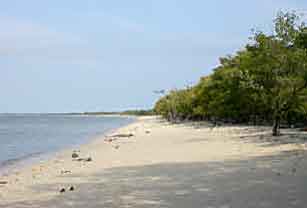
Top Left: Middle Cape looking south. Shows treed berm and pristine shell beach. Top Right: Northwest Cape looking north. Shows tree berm and sand/shell beach.
East, Middle and NW Cape cover 11.6 miles of nearly continuous beach. Treed berms are interrupted by three prairies. Our work concentrated on the berms.
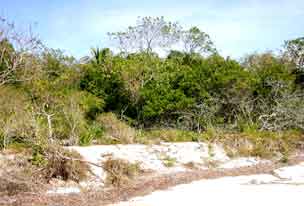
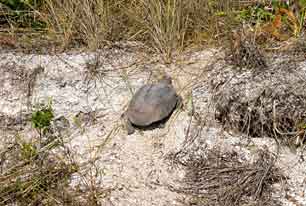
Gopher tortoise habitat on Middle Cape berm. Cape Sable is home to 1 endangered species, American crocodile, and 1 threatened species, the gopher tortoise.
Gopher tortoise climbing slide from beach to its hole on berm. The Cape beaches provide breeding habitat for another threatened species, the loggerhead turtle.
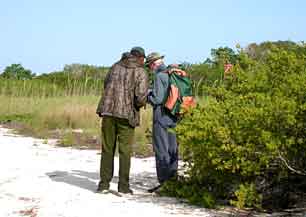
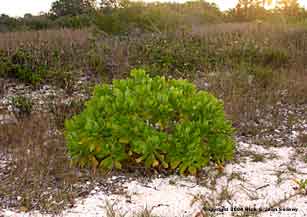
Rick and Ranger Tony Terry, the two facilitators of this project, confer on Middle Cape. See prairie and treed berm in background.
Beach naupaka, Scaevola sericea, one of four non-native species treated. Seeds float and generally take root at the beach/vegetation line.
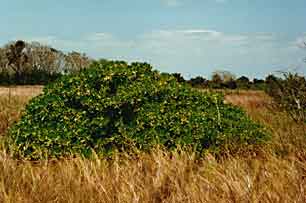

Beach naupaka can grow very large such as this plant on NW Cape removed early in the project. Behind is the NW Cape prairie dotted with various trees.
NW Cape prairie in 2004. Brazilian pepper, our most significant exotic problem, is rapidly expanding in this prairie. The prairies present unique treatment problems.
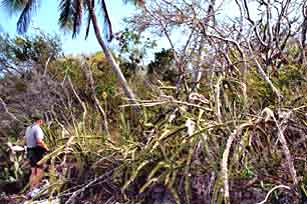
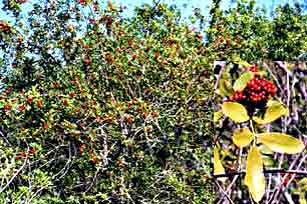
Ranger Aaron studies exotic lead tree, Leucaena leucocephala, (back center) in its Middle Cape hammock habitat of cactus, etc.--a real mess to work in!
Brazilian pepper, Schinus terebinthifolius, our primary non-native cape problem. It invades both the berm and prairies. Wildlife spread fruit aggressively.
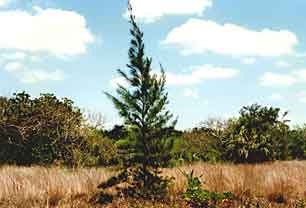
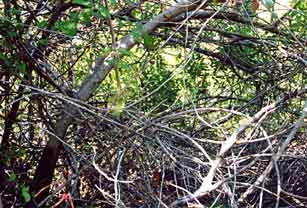
Australian pine, Casuarina equisetifolia, another non-native cape problem. Found in open areas at beach/vegetation line it can reach heights of 100 ft.
Branch tangle of Brazilian pepper, a major treatment problem. One must penetrate the tangle to reach the main trunk (darkened trunk lower left in photo).
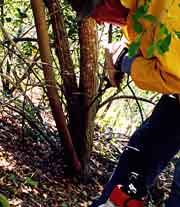
Rick showing how to spray trunk of Brazilian pepper. Spray must completely encircle the trunk from at least 1 foot above each fork to the ground. If areas are missed the tree will resprout and become even more difficult to kill.
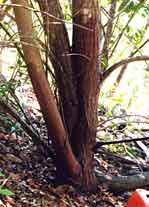
Sprayed trunk of Brazilian pepper. On Brazilian pepper we used a 10% mixture of the herbicide Garlon 4 in a carrier of JLB oil in a basal bark method of application. 2 1/2 gallon sprayers were preferred as they were easier to navigate under and through the branch tangles. This is a small tree. Most were larger.
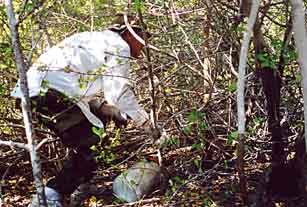
Leon Howell, loyal volunteer assistant in all our exotic plant eradication projects, crawling through pepper branches to reach the main trunk (left) and after the job was completed (right). A torn shirt is often the least of one's worries with mosquitoes and no-see-ums higher on the aggravation list.
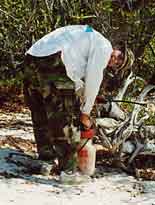
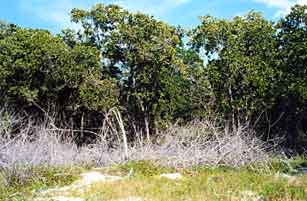
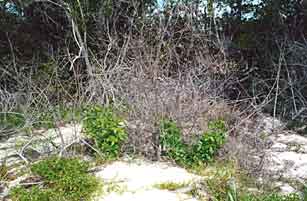
Dead Brazilian pepper (in foreground). This large clump was treated two years before photo.
Close-up of previous dead Brazilian pepper photo. Note the regrowth even two years after treatment.
As you can see from the above two photos this project can never end. As with all aggressive (category 1) non-natives, regrowth and reinfestation are a constant threat. The bright spot with Cape Sable is that, due to its remote location, once the main source of reinfestation is removed retreatment can be done on an increasingly less frequent basis.